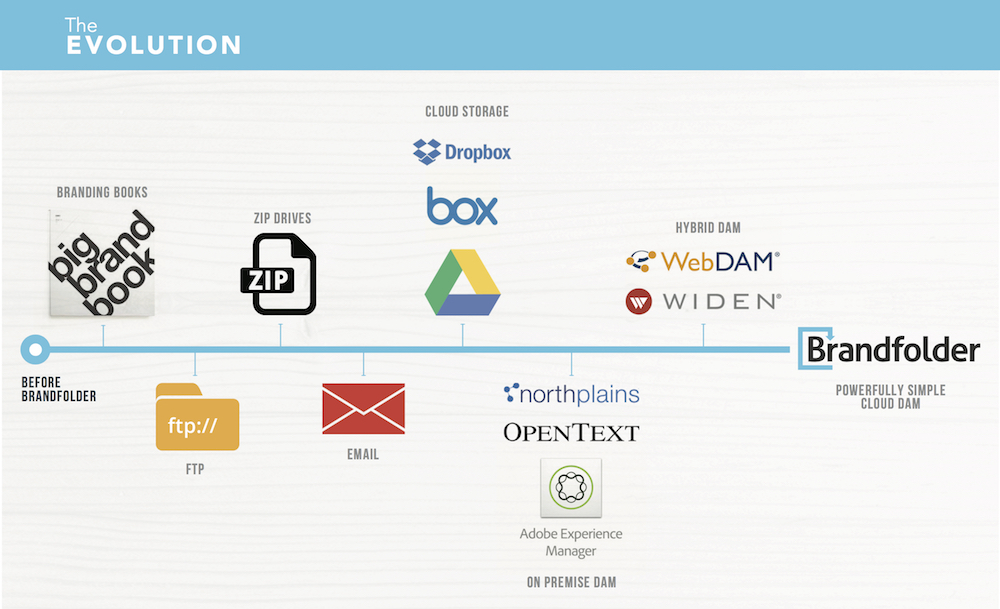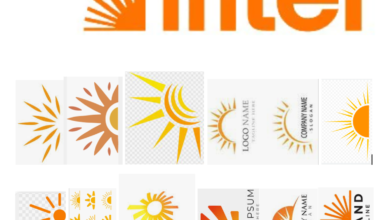[ad_1]
The way in which we manage digital assets and brand identities as a whole has certainly come a long way in a short amount of time. What started out as a physical, printed brand book in the 1970’s has now transformed into a powerful platform that provides different audiences with the tools they need to represent their brand accurately.
However, not everyone is aware of how sophisticated DAM has become — and why a dynamic brand management solution is essential for modern brands. That’s why we’re examining how the golden age of AOL and floppy disks evolved into the robust DAM solutions of today.

Before the internet was born, brand guides existed as physical branding books (imagine that!). These manuals presented official logos and colors, detailed how graphics should be used in various contexts, and outlined overall brand voice and identity. Just check out the original NASA Graphics Standard Manual issue to see one in action for yourself.

When the World Wide Web was invented in 1989, FTP (File Transfer Protocol) became a standard method for transferring files between clients and servers on a computer network. Have you ever downloaded a new version of your browser? Then you’ve probably used FTP without even knowing it!
To download more than a few files, or to upload any files at all using FTP, you’d need to install a bona fide FTP client, log into an FTP server, navigate the server’s folder structure, and exchange files. Compared to today’s standards, this process is relatively inefficient and cumbersome.
The glorious 90’s arrived soon after, and along with it came a physical way to transfer files: zip drives. Zip drives are a removable, portable way to store and transfer files. Think: floppy discs, rewritable CDs, and now, USB flash drives.
Around the same time, internet service providers like AOL came onto the scene, and email became a popular way to communicate and exchange files. Enjoy this retro photo of the original AOL dial-up window (although apparently it’s not so retro, as AOL revealed last year that 2.1 million people still subscribe to dial-up internet):

Fast-forward to 2012, when cloud storage services like Dropbox, Box, and Google Drive started to gain traction. These services allow you to store files online, sync those files across devices, and share your files with others — marking a big shift from clunky 1:1 file transfers and physical devices, to easily accessible file storage that exists in the cloud.
Meanwhile, Digital Asset Management was quietly introduced in the background, adding advanced functionality on top of basic cloud storage. Unlike cloud storage offerings, DAM platforms are designed for easy asset organization, allow advanced sharing options, and provide a single source of truth for all employees (just to name a few benefits!).
The first DAM platforms were implemented as on-premise solutions (meaning they exist physically on computers and servers in an office building). Since on-premise solutions also come with hefty operating expenses, cumbersome software maintenance, and potential security risks, they aren’t an ideal choice for most modern companies.
Then, cloud computing came onto the scene and changed the DAM game. Cloud-based DAMs eliminate the burden on IT, allow for immediate scaling based on your business needs, and enable team collaboration from anywhere in the world. Plus, if your platform is hosted on something like Amazon Web Services, you can rest assured that its security and backup services are top-notch.
Check out this blog post to learn more about the benefits of cloud-based DAM.

For inclusiveness, some organizations choose hybrid DAM: a combination of both on-premise and cloud-based services. This may better serve companies who have regulatory restrictions requiring some documents to be hosted on-site, and others to be hosted in the cloud (for global distribution purposes).
Whichever way you go, DAM is for sure the modern way of managing brand assets. Many think basic cloud storage is sufficient, when in truth, they’re missing out on the wide range of functionality that DAM provides.
Imagine a single source of truth where both internal employees and external partners can get whatever they need, whenever they need it. You’d spend less time searching for and sharing assets, and more time doing the things that really matter.
Sounds like something you can get behind? Well, that dream world of productivity can become a reality with a DAM solution. To learn more about which DAM solution is right for your business, download our free eBook below.
Source link






